23 found, showing page 1 of 2
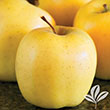
This dependable apple variety produces sweet, rich golden apples. It grows 15-25' tall and 15-20' wide. It features showy white blossoms in the spring, and the fruit ripens between September and October. It is self pollinating, but produces more fruit when paired with another pollinator, such as 'Red Delicious' or 'Honeycrisp'.
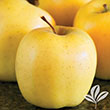
This dependable apple variety produces sweet, rich golden apples. It grows 15-25' tall and 15-20' wide. It features showy white blossoms in the spring, and the fruit ripens between September and October. It is self pollinating, but produces more fruit when paired with another pollinator, such as 'Red Delicious' or 'Honeycrisp'.
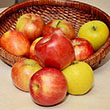
Combo apples generally bear fruit beginning in July and go all the way through October. These unique apple trees graft multiple different cultivars onto one tree, so you can enjoy a variety of flavors throughout the season. They average about 15-25' tall and 15-20' wide.
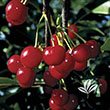
The 'Juliet' is a dwarf, shrub-like variety that produces a large crop of deep-red cherries that have a deliciously sweet, yet richly complex, flavor. Its super sweet, yet mildly tart flavor makes these cherries perfect for baking, jams, ice cream fresh eating, and even freezing for later use. They will grow 5-8' tall and wide and fruit will ripen in mid-summer.
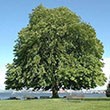
The 'Dunstan' chesnut bears heavy crops of large, sweet nuts that are great for eating, baking and roasting. This variety is a combination fo the American and Chinese chesnut and is resistant to chesnut blight. This tree will average at 30-50' tall and 15-20' wide. Fruit will ripen mid-September through October.
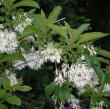
The 'Spring Fleece' is known for its profuse flowering of fragrant white flowers that emerge in the spring. Flowers attract hummingbirds, butterflies and other beneficial pollinators. It's a great mid-sized tree, growing 12-15' tall and 15-20' wide.
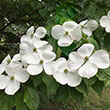
The 'Hyperion' is a fast growing variety with fantastic disease resistance. It produces large, white flowers blushed with pink that cover the entrie tree in spring. Its curly, green leaves turn stunning shades of yellow, purple and orange in the fall. It will grow 15-20' tall and wide at maturity. Showy red fruit is produced in the fall and is enjoyed by a variety of birds.

Venus' has a broad, rounded growth habit, reaching 15-20' tall and wide at maturity. It produces massive clusters of large, true-white flowers in late spring that persist into summer.

Venus' has a broad, rounded growth habit, reaching 15-20' tall and wide at maturity. It produces massive clusters of large, true-white flowers in late spring that persist into summer.
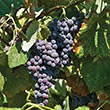
The 'Concord' grape is an American classic. Sweet, purple grapes ripen in late-September and are ideal for making jams, jellies, grape juice and wine. This seeded variety will grow 15-20' long, but can be pruned to a more managable size if necessary. May need protection from harsh winter winds.
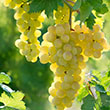
The 'Edelweiss White' is a climbing variety that will rapidly grow 15-20' long. It produces large clusters of sweet, pale-gold grapes that ripen early in the season. When harvested early in the season, this sweet variety makes an excellent white wine.
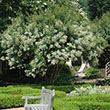
The 'Natchez' is an extremely popular variety due to its size and its true-white white, panicle flowers that bloom profusely throughout the summer. This variety will quickly reach 20-30' tall and 15-20' wide. Its foliage turns vibrant, orange-red in the fall.
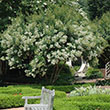
The 'Natchez' is an extremely popular variety due to its size and its true-white white, panicle flowers that bloom profusely throughout the summer. This variety will quickly reach 20-30' tall and 15-20' wide. Its foliage turns vibrant, orange-red in the fall.
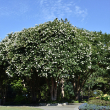
Height: 25 feet
Spread: 20 feet
Sunlight: full sun partial shade
Hardiness Zone: 5b
Other Names: Crape Myrtle, Crepe Myrtle
Description:
An ornamental tree that is covered with papery panicles of white flowers on weeping branch tips; decorative bark exfoliates to expose layers of color; shows good resistance to powdery mildew; heat and drought tolerance; does not like to be over-fertilized
Ornamental Features:
Natchez Crape Myrtle is bathed in stunning panicles of white frilly flowers at the ends of the branches from early to late summer. It has attractive dark green deciduous foliage which emerges coppery-bronze in spring. The oval leaves are highly ornamental and turn orange in fall. The peeling brown bark is extremely showy and adds significant winter interest.
Landscape Attributes:
Natchez Crape Myrtle is a dense multi-stemmed deciduous tree with a shapely form and gracefully arching branches. Its average texture blends into the landscape, but can be balanced by one or two finer or coarser trees or shrubs for an effective composition.
This is a relatively low maintenance tree, and is best pruned in late winter once the threat of extreme cold has passed. Deer don't particularly care for this plant and will usually leave it alone in favor of tastier treats. It has no significant negative characteristics.
Natchez Crape Myrtle is recommended for the following landscape applications:
- Accent
- Mass Planting
- Hedges/Screening
- General Garden Use
Planting & Growing:
Natchez Crape Myrtle will grow to be about 25 feet tall at maturity, with a spread of 20 feet. It has a low canopy with a typical clearance of 4 feet from the ground, and is suitable for planting under power lines. It grows at a fast rate, and under ideal conditions can be expected to live for 40 years or more.
This tree does best in full sun to partial shade. It prefers to grow in average to moist conditions, and shouldn't be allowed to dry out. It is very fussy about its soil conditions and must have rich, acidic soils to ensure success, and is subject to chlorosis (yellowing) of the foliage in alkaline soils. It is highly tolerant of urban pollution and will even thrive in inner city environments. This particular variety is an interspecific hybrid.
23 found, showing page 1 of 2